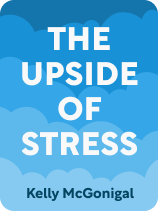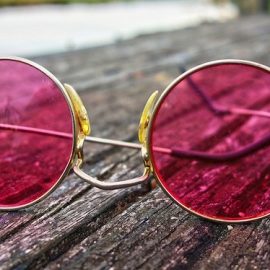

This article is an excerpt from the Shortform book guide to "The Upside of Stress" by Kelly McGonigal. Shortform has the world's best summaries and analyses of books you should be reading.
Like this article? Sign up for a free trial here.
Is stress really that bad for you? In what way can stress be a good thing?
Most people are led to believe that stress is bad for their health and that they should try to avoid it. Although stress can be harmful, the research supporting this negative view misrepresents stress’s true, nuanced nature.
In this article, we’ll discuss the science of stress, when it’s harmful, when it can be beneficial, as well as the different forms stress can take and how these affect you.
A Traditional—but Limited—View of Stress
In her book The Upside of Stress, McGonigal argues that our fear of stress is largely based on irrelevant research. She claims that most theories describing the negative effects of stress on human health are informed by extremely stressful animal studies (mostly involving rats) whose results aren’t applicable to humans. The stress tests performed on animals were sporadic, uncontrollable, and lacked any meaning for the animals involved. These conditions caused a chronic fight-or-flight response, which led the animals to develop serious health issues like ulcers, depression, and death. Researchers then theorized that because stress is so damaging to the health of animals, it must also be damaging to human health.
Although the stress conditions used in animal studies can apply to extreme cases of human stress–in domestic abuse, for example–McGonigal contends that the chronic fight-or-flight stress response induced by life-threatening conditions in animal studies doesn’t represent the typical, daily stress responses you experience. Therefore, you don’t suffer the same health consequences that the animals in these studies do.
| Although there are limitations to animal testing that need to be controlled for (such as different sleep cycles, metabolic rates, and so on), one analysis concludes that the results of animal tests can be applicable to human stress situations. Contrary to McGonigal’s claim, this analysis argues that the conditions of animal studies don’t always provoke extreme stress responses, but rather, vary from mild irritation to trauma. Thus, animal studies can simulate a realistic range of stress similar to what humans experience. For example, mild stress is induced in rats by temporarily closing them in cages that limit their movement or forcing them to swim, while trauma is often induced by separating baby rats from their mothers at birth. Although all of these activities seem unpleasant, the rats perceive them differently than humans do. For example, forced swimming might seem extremely stressful to you, but rats are naturally good swimmers, so this activity doesn’t trigger an intense stress response as we might imagine. |
Not only did the animal science of stress conclude that stress is harmful to your health, but McGonigal explains it also led to the mismatch theory. This is the idea that stress is an outdated, biological mechanism: a response that was helpful to your ancestors—who faced life-threatening danger on a daily basis—but doesn’t apply well to your life in the modern world. The mismatch theory arose because the intense, fight-or-flight response displayed in animal studies was understood to be the default response to any level of stress. In this view, your stress response is the same whether you’re cramming for a test or being charged by a bear. Of course, fighting or running aren’t appropriate responses to a test at school or a work presentation—but we’ve come to view all stress as misplaced and harmful.
(Shortform note: McGonigal argues that the mismatch theory is based on the premise that stress is limited to a fight-or-flight response. However, one analysis published after McGonigal’s book recognizes the existence of multiple human stress responses and notes that the harmful evolutionary mismatch of our stress response is only associated with our fight-or-flight response. We can experience chronic stress—and the ills it brings—because our fight-or-flight response is triggered by multiple modern factors, including the complexity of today’s choices, media exposure, unsatisfying work life, less structured families, and lack of exercise.)
A New Understanding of Stress
In contrast to the traditional view, McGonigal explains that your stress response is more sophisticated than just fight-or-flight. Modern research reveals you actually have a variety of stress responses that help you survive life-threatening situations, feel confident to overcome challenges, and connect with others to cope with life’s difficulties. Thus, McGonigal argues that stress isn’t an irrelevant relic of our ancestral past, but a useful resource to be appreciated and utilized.
McGonigal defines stress broadly, as your response when something valuable to you is at risk. This could be your response to an immediate, life-threatening situation, or to meeting your partner’s parents for the first time. Depending on the stress trigger and your perception of it, McGonigal claims your stress response can manifest in one of three ways: the fight-or-flight (threat) response, challenge response, or tend-and-befriend response. Let’s examine each one.
(Shortform note: McGonigal’s definition of stress differs from the traditional definition in that it implies the significance of personal perception to stress’s function. For example, one medical organization echoes the traditional definition of stress as your “body’s response to pressure” and characterizes the response as simply fight-of-flight. In this view, stress seems to be a purely physical reaction, whereas McGonigal’s definition frames stress as something you can influence depending on what you care about.)
1. Fight-or-Flight (Threat) Response
This response occurs when you perceive your life to be in danger. For example, you’re felling a large tree in your yard and when you step back to watch the trunk tip away from you, you notice it’s starting to lean in your direction. Your body surges with energy and you leap clear of the crashing branches.

———End of Preview———
Like what you just read? Read the rest of the world's best book summary and analysis of Kelly McGonigal's "The Upside of Stress" at Shortform.
Here's what you'll find in our full The Upside of Stress summary:
- Why stress is an ally that should be embraced
- How stress can lead to enhanced health, greater success, and a more meaningful life
- How to change your mindset about stress to receive its benefits






